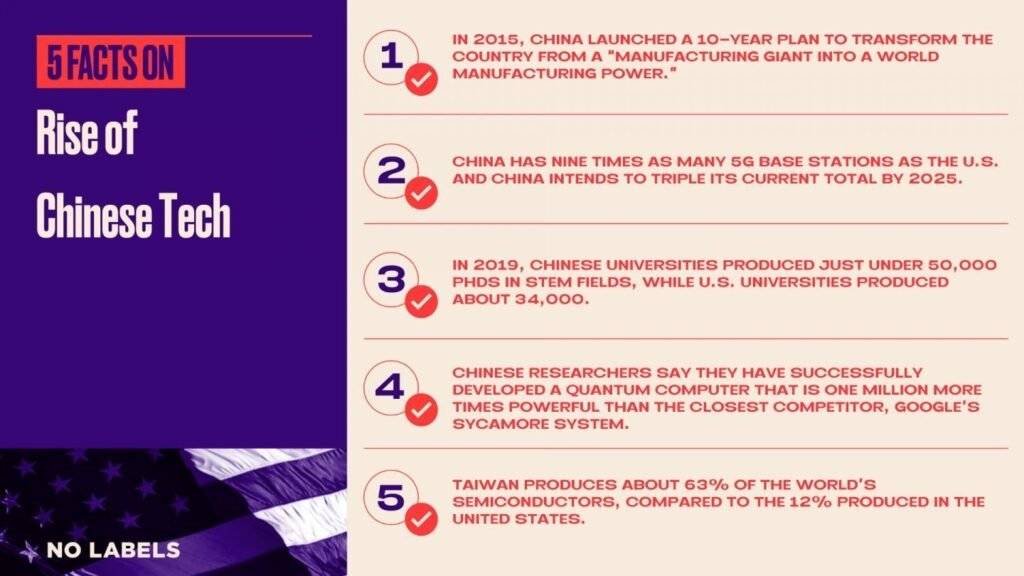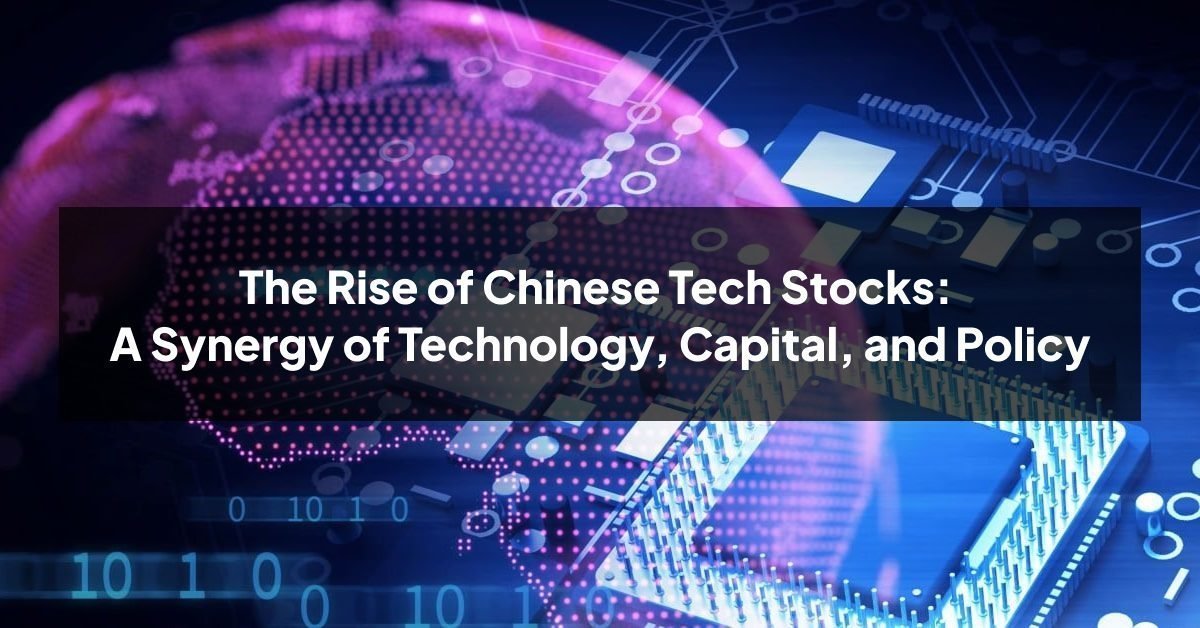Chinese rapid rise in technology is transforming industries worldwide. China’s influence is clear in many areas. This includes AI chatbots like DeepSeek, electric vehicles (EVs), solar panels, drones, and quantum computing. But how did China achieve this level of dominance? And what does it mean for the global tech landscape?
In this post, we will look at Chinese tech boom. We will discuss the government strategies that support it. We will also explore the leading industries and the challenges they face.

China’s Tech Takeover: Key Industries Leading the Charge
China’s quick rise in technology comes from government support, large investments, and a plan for self-sufficiency. Let’s take a look at the industries where Chinese is leading or closing in on the competition.
1. Artificial Intelligence (AI) – The Rise of DeepSeek
AI is one of China’s biggest bets. The DeepSeek AI chatbot has recently gained international attention, challenging established US-based AI firms.
- China now files more AI patents than any other country, signaling a shift in global AI dominance.
- The country’s investment in AI research and development (R&D) is substantial, with billions of dollars poured into innovation.
- Chinese AI firms like DeepSeek have found ways to create strong AI models. This is despite US sanctions that limit access to advanced chips. They are doing this with fewer resources.
🔗 Learn how AI is reshaping global industries
2. Electric Vehicles (EVs) – Outpacing the West
Chinese has overtaken traditional auto giants in the EV industry, thanks to companies like BYD.
- China is now the world’s largest EV market, outselling both the US and Europe.
- Government subsidies and infrastructure investments have made EVs widely accessible.
- China’s dominance in battery production (the key component of EVs) gives it a significant edge over global competitors.
📊 China vs. Global EV Market Share (2023)
| Country | EV Sales (in millions) | Leading Company | Battery Market Share (%) |
|---|---|---|---|
| China | 6.8M | BYD | 60% |
| USA | 1.4M | Tesla | 15% |
| Europe | 2.2M | Volkswagen | 20% |
🔗 Explore the future of electric vehicles
3. Renewable Energy – Leading in Solar and Wind
China’s push for renewable energy is staggering.
- It produces 80–95% of the world’s solar panels, dominating the global supply chain.
- By 2028, 60% of the world’s renewable energy is expected to come from China.
- The government has set ambitious targets to reduce coal dependence and transition to clean energy.
🔗 How China is leading the global clean energy race
4. Drones – Controlling the Skies
China is a powerhouse in drone manufacturing, with DJI leading the charge.
- DJI holds 70% of the global commercial drone market.
- Three of the world’s top 10 drone manufacturers are based in China.
- China’s cost-effective manufacturing and cutting-edge R&D have made it the undisputed leader in this sector.
🔗 Discover the rise of China’s drone dominance
5. Quantum Computing – Surpassing the US?
Quantum computing is another area where China is making huge strides.
- Chinese scientists publish more quantum research papers than any other country.
- Some reports suggest China is ahead of the US in specific quantum applications.
- Quantum computing is seen as the next frontier in cybersecurity, AI, and data processing.
🔗 Quantum computing and China’s edge
The Secret to China’s Tech Success: Made in China 2025
The foundation of China’s technological rise is Made in China 2025, a government-led initiative launched in 2015.
- The goal was to move beyond low-cost manufacturing and become a global leader in high-tech industries.
- The plan set more than 250 specific targets across 10 core industries, including AI, semiconductors, and aerospace.
- According to the South China Morning Post, China has achieved 86% of these goals, with some sectors exceeding expectations.
🔗 Understanding Made in China 2025
How China Accelerated Its Growth
China’s tech growth is not only because of new ideas. It also comes from strong policies and investments.
1. Government-Led Investment & Funding
- China has committed $1.5 trillion to tech R&D, including AI, semiconductors, and green energy.
- By 2020, $627 billion had already been spent on grants, acquisitions, and research centers.
2. Attracting Foreign Talent & Partnerships
- China has lured foreign researchers and required international firms to form joint ventures with Chinese companies.
- This has allowed local firms to acquire knowledge and technology faster than competitors.
3. Self-Sufficiency & Sanctions Response
- The US has imposed export restrictions on advanced chips to slow China’s AI and semiconductor progress.
- In response, companies like Huawei have shifted to domestic chip production, making surprising breakthroughs in advanced microchip technology.
🔗 How US sanctions are reshaping China’s tech industry
Challenges Ahead for China’s Tech Dominance
Despite its success, China still faces major hurdles:
- Chipmaking Weakness – China is behind in advanced semiconductor manufacturing. This important area is still led by the US, Taiwan, and South Korea.
- Global Trade Restrictions – Western nations continue to tighten sanctions and limit tech exports to slow China’s growth.
- Competition from the US and Europe
The US government and private companies have pledged more than $500 billion. This funding is for AI and semiconductor infrastructure. This will help them stay ahead.
🔗 How the US and its allies are countering China’s rise
The Future of China’s Tech Ambitions
China has strong resources and clear goals. It also has support from the government. Because of this, China will remain an important part of global technology.
China is increasing its focus on AI, electric vehicles, renewables, and semiconductors. Meanwhile, Western tech companies are making counter-investments.
Will China surpass the US as the global tech leader? The battle isn’t over yet. However, one thing is clear: China is a major player in many key industries. The world is taking notice.
Frequently Asked Questions (FAQs) The Rise of Chinese Tech
1. What is Made in China 2025?
Made in Chinese 2025 is China’s plan. The goal is to shift from being a low-cost manufacturer. They want to become a high-tech leader in areas like AI, semiconductors, and electric vehicles.
2. How does China compare to the US in AI?
China files more AI patents than any other country and is rapidly closing the gap with US-based AI giants.
3. What challenges does Chinese face in tech?
China struggles with advanced semiconductor manufacturing due to US-led sanctions, which limit access to key chipmaking equipment.
4. Is Chinese leading in renewable energy?
Yes. China dominates the solar panel supply chain and will generate 60% of the world’s renewable energy by 2028.
China’s tech rise is undeniable. How do you think it will shape the future? Let us know in the comments! 🚀


